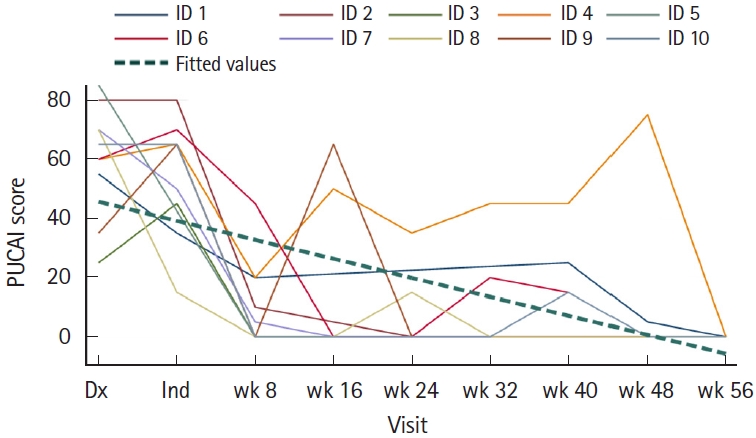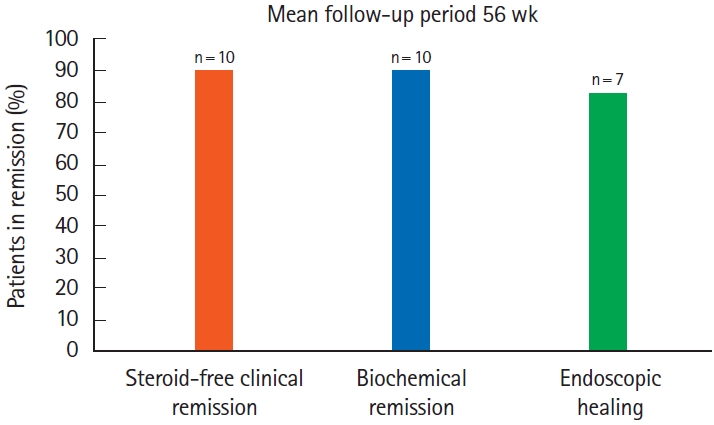 |
 |
- Search
| Intest Res > Epub ahead of print |
|
Abstract
Background/Aims
Methods
Results
ADDITIONAL INFORMATION
Funding Source
The authors received no financial support for the research, authorship, and/or publication of this article.
Data Availability Statement
The data produced in this article cannot be shared publicly due to the privacy of the study participants. The de-identified data will be shared upon request to the corresponding author.
Author Contributions
Conceptualization: all authors. Data curation: Riaz MS, Rehman R, Esharif D. Formal analysis; Investigation; Methodology; Project administration; Resources: all authors. Software: Has P. Supervision; Validation; Visualization: all authors. Writing - original draft: Rehman R, Riaz MS. Writing - review & editing: Rehman R, Herzlinger M, Shapiro J, Subedi S. Approval of final manuscript: all authors.
Fig. 2.

Fig. 3.

Table 1.
| Variable | Value (n = 10) | Reference range |
|---|---|---|
| Demographic | ||
| Sex | ||
| Female | 4 (40) | |
| Male | 6 (60) | |
| Age at diagnosis | 13.0 (11.5-16.5) | |
| Disease characteristic | ||
| Diagnosis | ||
| Ulcerative colitis | 7 (70) | |
| IBD-U | 3 (30) | |
| Paris classification | ||
| Left sided (E2) | 1 (11)a | |
| Pancolitis (E4) | 8 (89) | |
| PUCAI | 62.5 (55.0-70.0) | Remission: 0-9 |
| Mild disease: 10-34 | ||
| Moderate disease: 35-64 | ||
| Severe disease: 65-85 | ||
| Hemoglobin (g/dL) | 11.3 (9.2-14.0) | Male: 13.5-16.0 |
| Female: 11.0-15.0 | ||
| C-reactive protein (mg/L) | 25.9 (9.7-55.9) | 0-10 |
| Erythrocyte sedimentation rate (mm/hr) | 41 (25-65) | 0-15 |
| Fecal calprotectin (mg/kg) | 2,089 (1,445-3,000) | 0-49.9 |
| Prior therapies | ||
| Anti-TNF | 10 (100) | |
| Vedolizumab | 2 (20) | |
| Systemic steroids | 10 (100) | |
| Mesalamine | 8 (80) | |
| Methotrexate | 4 (40) | |
| 6-Mercaptopurine | 1 (10) | |
| IBD specific diet therapy | 4 (40) |









